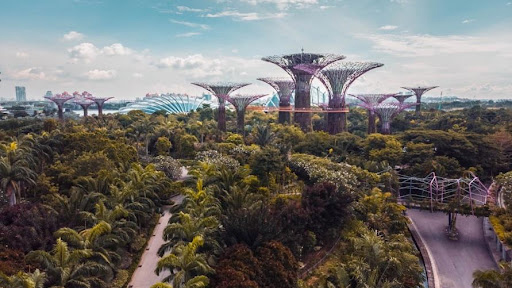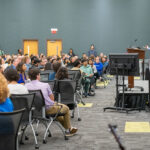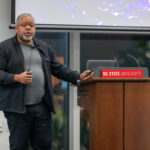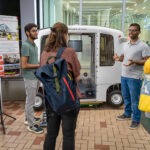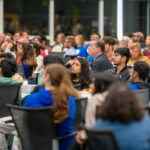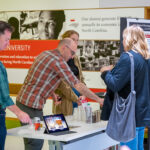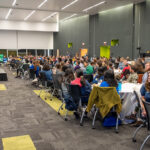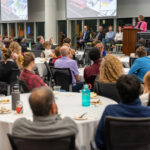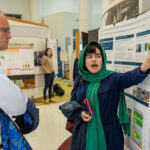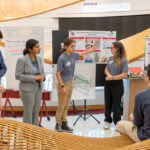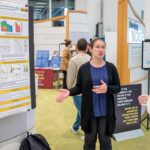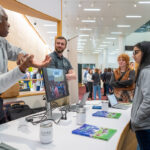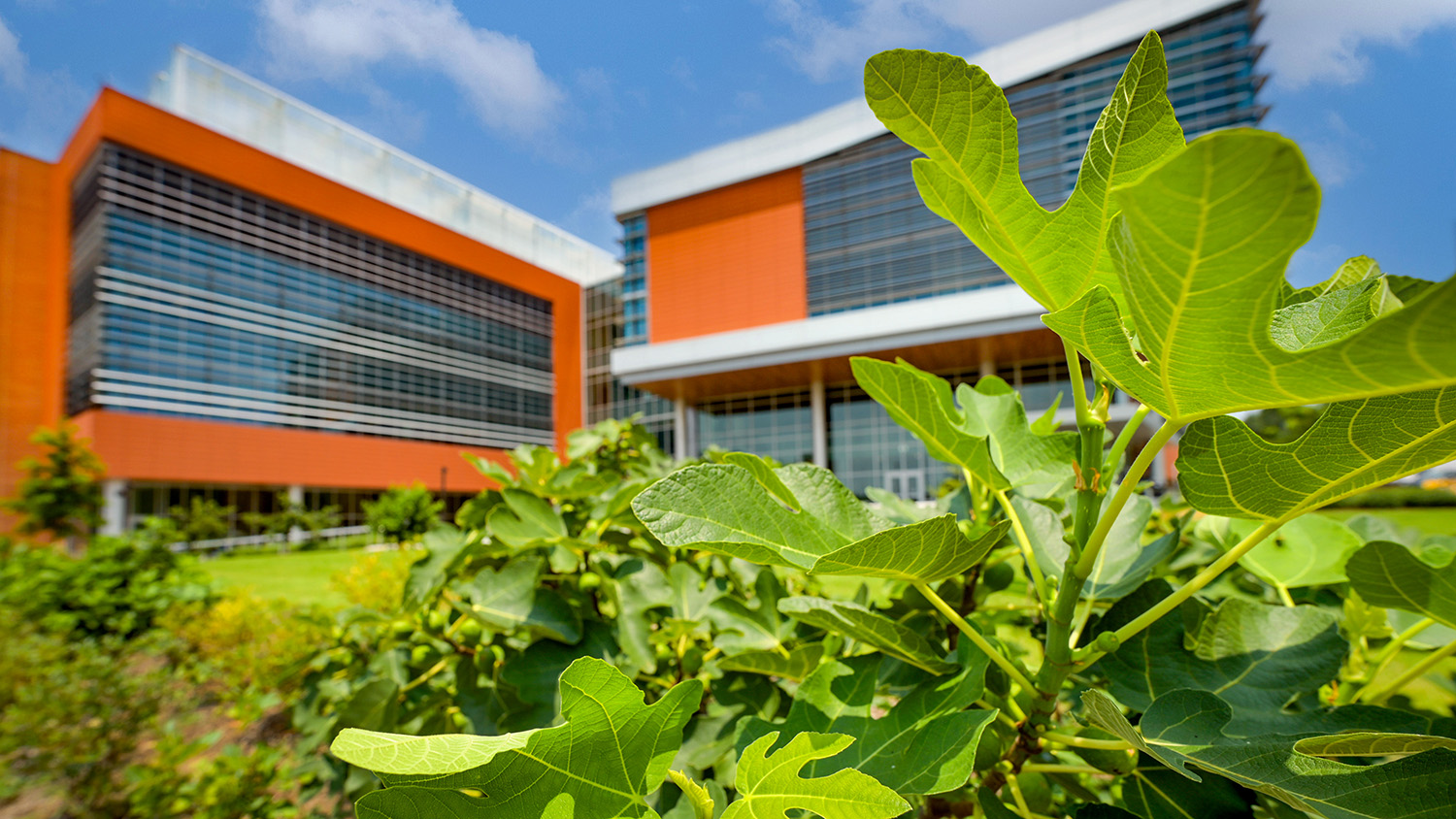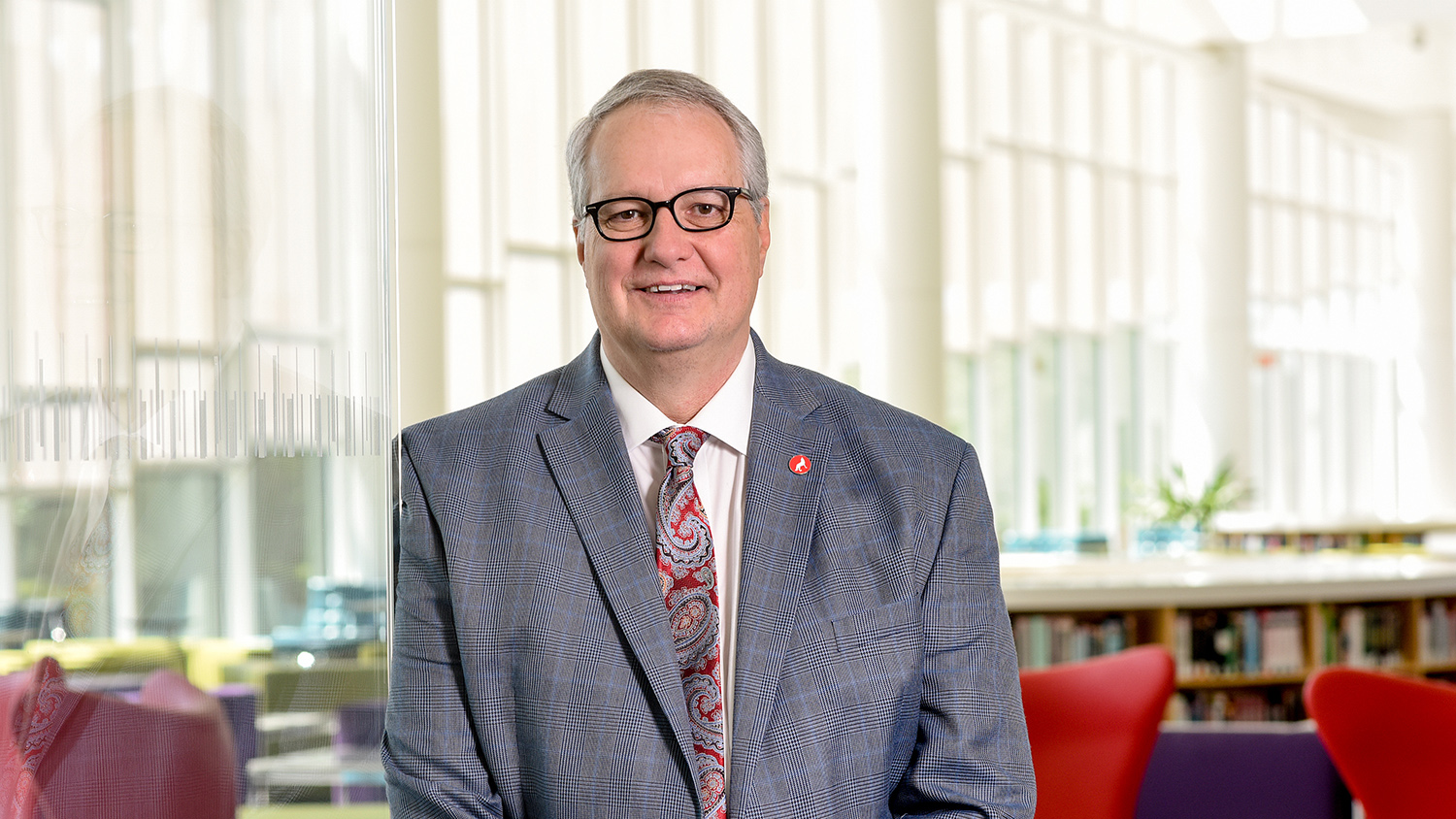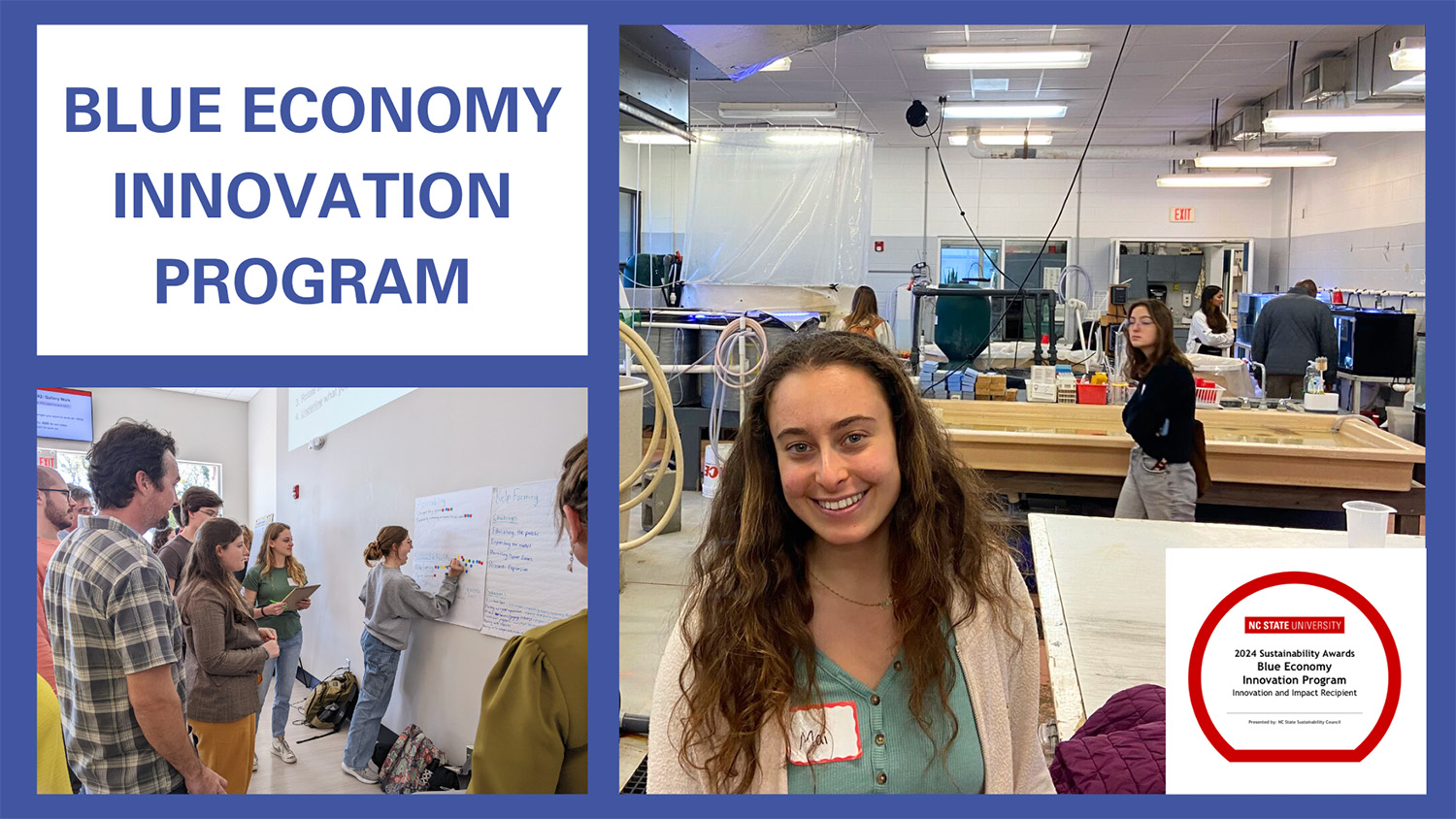Last month, NC State hosted the Envisioning Urban Futures event, a collaborative effort of The Long View Project, the Office of University Interdisciplinary Programs, the NC State University Libraries, Arts NC State and NC State College of Design’s Initiative for Community Growth and Development. Together, they invited participants to explore cities of the near and distant future.
The event featured a series of short, TED-style talks, as well as poster presentations by faculty, students and staff from around the world at the messy interface between cutting-edge research and big picture thinking, along with artistic interpretations of envisioned urban futures. Throughout the presentations, a focus was placed on the recognition that the human story is embedded in the broader story of the living world, one part of a bigger whole.
“We can only plan for the future we want if we imagine that future in the first place,” said Jory Weintraub, part of the Long View core team and director of science engagement in the Office of University Interdisciplinary Programs. “We asked scientists, artists, engineers, writers and other experts from across the disciplines to outline the future that they think is most likely — a business as usual future — and then also the better future toward which they are working. In thinking about those better urban futures, scholars will consider beauty, sustainability and livability, among other urban elements.
Envisioning Urban Futures included talks by the following keynote speakers:
- Kofi Boone, Joseph D. Moore Distinguished Professor of Landscape Architecture and Environmental Planning, NC State
- Christopher Galik, Professor of Public and International Affairs, Director of Sustainable Futures Initiative, NC State
- Clint Penick, Assistant Professor of Entomology and Plant Pathology, Auburn University
- Georgina Sanchez, Research Scholar, Center for Geospatial Analytics, NC State
- Julie White, Deputy Secretary for Multimodal Transportation, North Carolina Department of Transportation
In addition to talks and poster presentations, attendees could share their art, literature and poetry that focused on a vision of future cities and urban landscapes, and demonstrations from engineers and inventors working on ideas to improve cities of the future. Presenters included representatives from the Museum of Life and Science in Durham, Raleigh City Farm and the Future Cities competition, in which middle school students competed to design more sustainable cities of tomorrow.
Artistic interpretations included a piece by NC State graduate student Maurika Smutherman, who was selected in a competitive call for commissioned artwork. Smutherman created a digital collage called “Envisioning the Future of Charlotte Through the Past and Present”, which can be viewed here. Her description of the artwork, which involves viewing Charlotte (her hometown) through the lenses of the Indigenous and Black communities, can be seen on the piece.
“I was inspired to create this collage by the gentrification which has been taking place in my hometown of Charlotte, North Carolina; specifically, that of Charlotte’s historically Black neighborhoods, which has led to the displacement of predominantly Black communities,” said Smutherman. “The call for artwork immediately made me think about the cultural traditions of Black and Indigenous people who built communities that demonstrated care for the natural environment rather than exploitation.”
“I think there is much to learn from Native Americans, especially when it comes to living with and caring for the land. Indigenous approaches to building their communities are rooted in a symbiotic relationship with nature, which I think is critical considering the harm that continues to be inflicted upon the planet under the guise of progression and development,” said Smutherman. “Black communities, similarly, found ways to thrive that did not depend on exploiting nature and instead amplified cultural ways of knowing to provide safe spaces to grow and learn from one another. It is not only important to know and share the histories of people like the Catawba or the residents of Brooklyn neighborhood in Charlotte, but also to implement the ways of being and knowing demonstrated by these groups in order to move toward an urban future of Charlotte that is more just and equitable for all, including the natural world.”
Smutherman notes that while most of the elements in the collage are archival materials, she included an image of monarch butterflies to symbolize transformation, as well as an image of present-day street signs from the Black areas that remain in Charlotte. On the left, she included a 1913 image of an adult and two children identified as members of the Catawba nation taken in what is now known as Rock Hill, South Carolina. The Catawba are known as the “people of the river,” referring to the Catawba River which includes Sugar Creek, a prominent body of water that runs through Charlotte. She also included headlines taken from archived Charlotte publications that mention Sugar Creek. These publications discussed the pollution of the creek due to the city of Charlotte using it as a waste dump, but Smutherman wanted to call attention to the way Native Americans cared for and lived alongside Sugar Creek. The collage also features archival images of a Catawba potter and fisherman. The background image on the left of the collage is a rendering for a new medical school being built in Charlotte’s innovation district, which is located in Second Ward, where the city’s largest Black neighborhood — Brooklyn — once lived before it was demolished throughout the 60s and 70s as part of an urban renewal plan. In the middle of that rendering, she placed a 1986 image of African-American children playing outside. The black-and-white image of the historical buildings on the right is the Brooklyn neighborhood before it was destroyed and there is also an image of three Black boys watching as Second Ward High School, the city’s first public school for Black students, is demolished in the 70s, justified by city officials because it would help facilitate the racial integration of public schools. Her main goal with including these images was to amplify the history of Black communities in Charlotte and again, showcase their commitment to nurturing the environment they lived in rather than harming it.
Celen Pasalar, associate professor of landscape architecture and environmental planning at NC State, had 22 students across two of her classes create collages portraying their visions of future cities. Students were asked to create a collage that “visually narrates their thoughts and vision of future cities that are visually appealing, sustainable, resilient and livable.”
Jillian Ohl, an NC State alumnus and artist was commissioned to create a large futurescape of the Raleigh skyline which was displayed in a way that people could interact and engage with, comment on what they liked about it, as well as what concerned them.
In the true spirit of interdisciplinarity and collaboration, Envisioning Urban Futures was coordinated by faculty and staff from across NC State, including:
- Karen Ciccone, Lead Librarian for Public Science, NC State University Libraries
- Rob Dunn, Senior Vice Provost for University Interdisciplinary Programs
- Charles Flink, Director, Initiative for Community Growth and Development, College of Design
- Amy Sawyers-Williams, Manager of Arts Outreach and Engagement, Arts NC State
- Adam Walters, Associate Director, Initiative for Community Growth and Development, College of Design
- Jory Weintraub, Director of Science Engagement, Office of University Interdisciplinary Programs
The event was certified as a “Sustainable Events Champion” by NC State’s Sustainability Office.
*All event photos courtesy Charles Dickens Photography*
